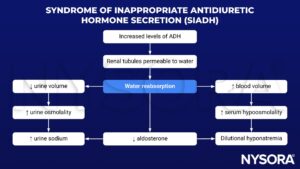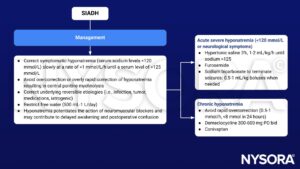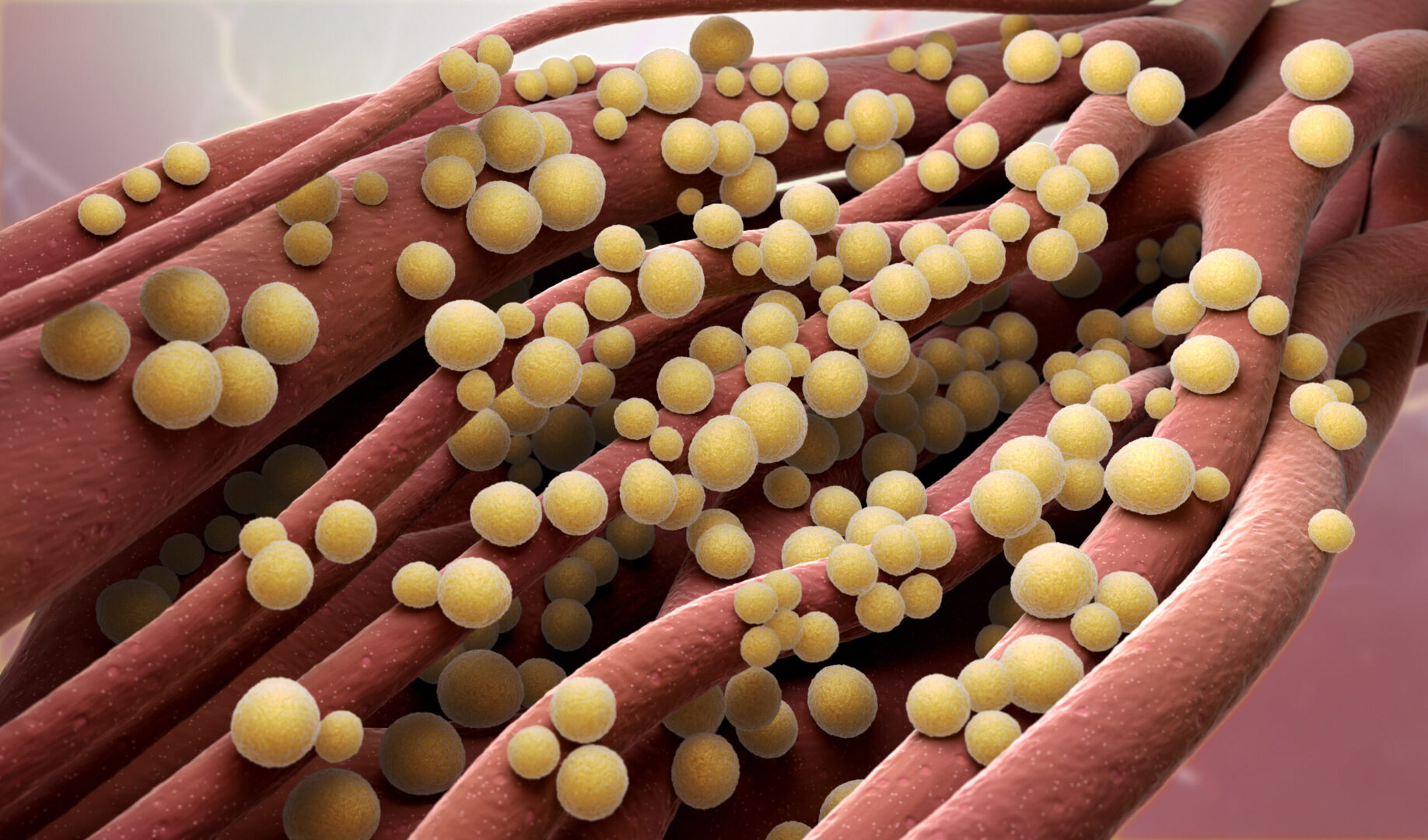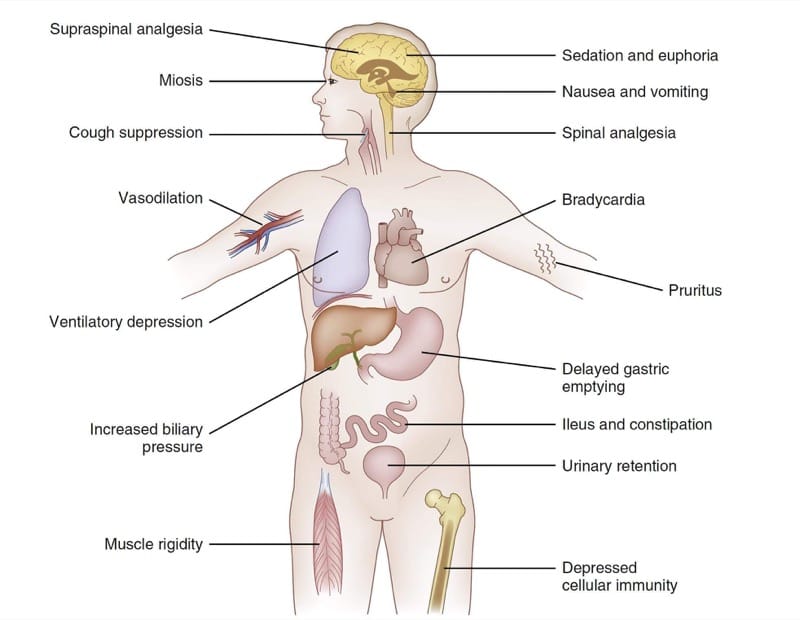Learning objectives
- Describe SIADH
- Recognize the symptoms and signs of SIADH
- Anesthetic management of a patient with SIADH
Definition and mechanisms
- Syndrome of inappropriate antidiuretic hormone secretion (SIADH) is characterized by excessive release of antidiuretic hormone (ADH) or vasopressin from the posterior pituitary gland or an abnormal non-pituitary source
- Overproduction of ADH leads to water retention, urinary sodium loss, and hyponatremia, resulting in volume expansion promoting urine flow rate, and thus limiting further water retention
Signs and symptoms
Hyponatremia is mainly responsible for the symptoms associated with SIADH
- Mild to moderate: Headache, lethargy, slowness, poor concentration, depressed mood, lack of attention, impaired memory, nausea, restlessness, instability of gait and falls, muscle cramps, tremor
- Advanced: Confusion, disorientation, somnolence, vomiting, hallucinations, acute psychosis, limb weakness, dysarthria
- Serious: Seizures, hemiplegia, severe somnolence, respiratory insufficiency, coma, death if untreated
Causes
- Conditions dysregulating ADH secretion in the central nervous system (e.g., meningitis, encephalitis, subarachnoid hemorrhage, subdural hematoma, hydrocephalus, Guillain-Barré syndrome, acute porphyria, multiple system atrophy, multiple sclerosis)
- Tumors secreting ADH
- Various lung diseases (e.g., pneumonia, lung abscess, asthma, cystic fibrosis)
- Drugs increasing ADH secretion
- Inherited mutations
- Transient causes (e.g., general anesthesia)
Pathophysiology

Treatment
- Restore fluid and electrolyte balance
- Water restriction
- PO or i.v. administration of hypertonic saline
- Medications
- Reduce fluid retention: Loop diuretics (i.e., furosemide)
- ADH antagonists (i.e., demeclocycline, tolvaptan, conivaptan)
- Eliminate underlying cause
- Caution with rapid correction of serum sodium concentration → may cause central pontine myelinolysis
Management

Suggested reading
- Gross P. Clinical management of SIADH. Therapeutic advances in endocrinology and metabolism. 2012;3(2):61-73.
- SIADH. In: Bissonnette B, Luginbuehl I, Marciniak B, Dalens BJ. eds. Syndromes: Rapid Recognition and Perioperative Implications. McGraw Hill; 2006. Accessed January 20, 2023.
We would love to hear from you. If you should detect any errors, email us customerservice@nysora.com







